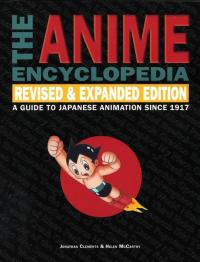Reception
Anime News Network 's George Phillips commends the encyclopedia for "In-depth analysis of several major series, and discussions on hundreds of anime series rarely (if ever) heard of in the West" but criticizes it for titles that "aren't listed under the names you suspect; can be quite confusing at first" though "the appendix in the back lists every title, including the Japanese and alternate English titles". [8] Animation World Network 's Fred Patten comments on the book being "300 pages larger; a 40% expansion" in its "Revised and Expanded" edition compared to the original volume. He commends it for being "designed for all readers; laymen and experts (fans and academicians) alike". [9] Animefringe's Ridwan Khan commends the book for having "the entries summarize the plot, offer an opinion, and often discuss points of interest, including similar anime or historical roots. Icons indicating the presence of bad language, nudity, and violence follow each entry. For many, including librarians, parents, and club leaders, this is potentially a very useful at-a-glance feature". [10] Patrick Macias, editor in chief of Otaku USA magazine, writing in The Japan Times , reviewing the second edition, comments ""Anime Encyclopedia" works best when it aims to stick to the facts, which it happily gets right more often than not" but "while Clements and McCarthy's mastery of Japanese culture, both high and low, is impressive, the authors sometimes stumble when [comparing Samurai Champloo to Pink Floyd's "The Wall"] they try to step outside their fields of expertise". [11] Valerie MacEwan commends the book saying, "only the most ardent aficionado of anime would find this volume lacking in detail. [It is] easy to use, fully indexed and cross-referenced with titles in Japanese and English". [12] Sarah of Anime UK News said "Where Jonathan Clements and Helen McCarthy really come into their own is the way they trace the influence of earlier shows that most of us have never seen". She notes that while the entries are not rated with a star system that Clement's and McCarthy's "descriptions can betray personal preferences which may not coincide with the reader's". [13]
This page is based on this
Wikipedia article Text is available under the
CC BY-SA 4.0 license; additional terms may apply.
Images, videos and audio are available under their respective licenses.
